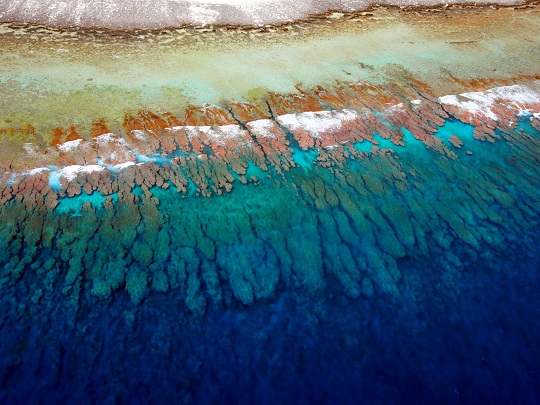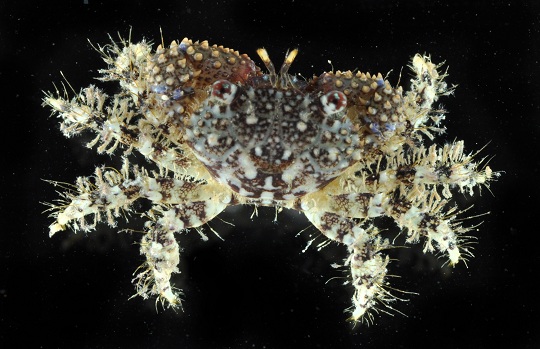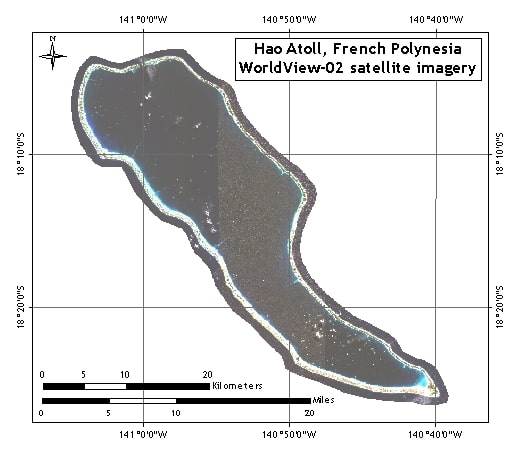Mention coral reefs and most people think of sweeping landscapes of corals, sponges, and fish. While those do exist in Hao Atoll, researchers are also seeing the reef through different lenses.
Satellite Imagery for Reef Habitats and Geomorphology of Coral Reef Ecosystems
Jeremy Kerr, research assistant at the National Coral Reef Institute, uses satellite imaging to get a sense of the spatial distribution of reef habitats and their geomorphology (the study of land forms and the processes that made them). As he states, “The bird’s eye view provided by satellite imaging compliments the divers’ view. By combining the two perspectives, we better understand the underlying processes shaping these coral reef ecosystems.”
Overflight views of the reefs allow the researchers to see specific features and details of the reef habitats to help determine important areas for surveying by the survey teams.

Dissecting Microscope for Micro Invertebrates, Biodiversity, Reef Ecology
On the other end of the field of view is the work of Jenna Moore from the Scripps Institution of Oceanography. She uses a dissecting microscope to view the reef at the macro level. By identifying invertebrates too small to be seen by the survey teams, she helps determine the full breadth of the reef’s biodiversity. Invertebrates are the most numerous and diverse group of animals on the reef forming an important part of the reef’s ecology.

(Photos by: Image 1 Jeremy Kerr, 2 Dr. Andrew Bruckner, 3 Jenna Moore)



